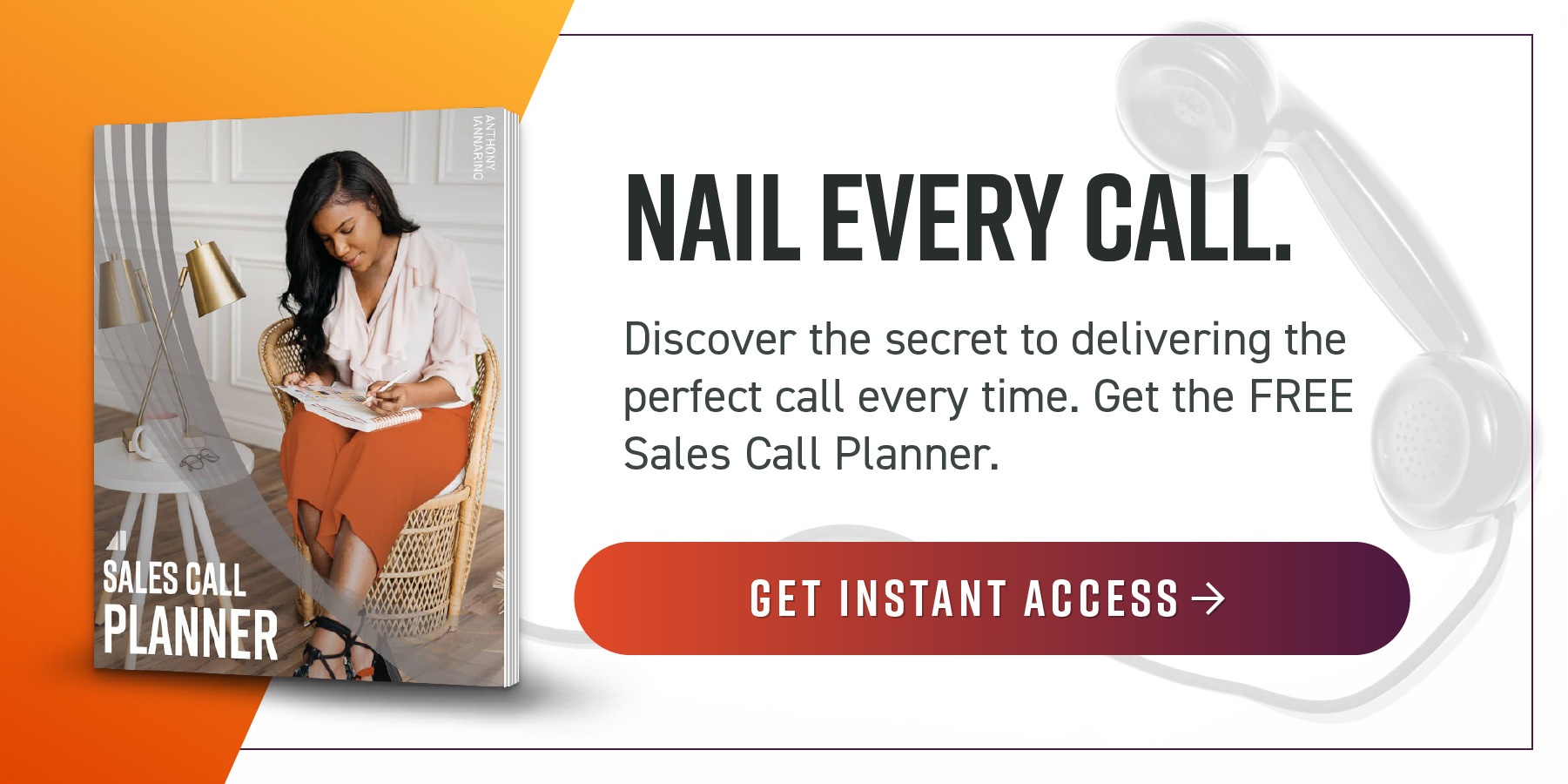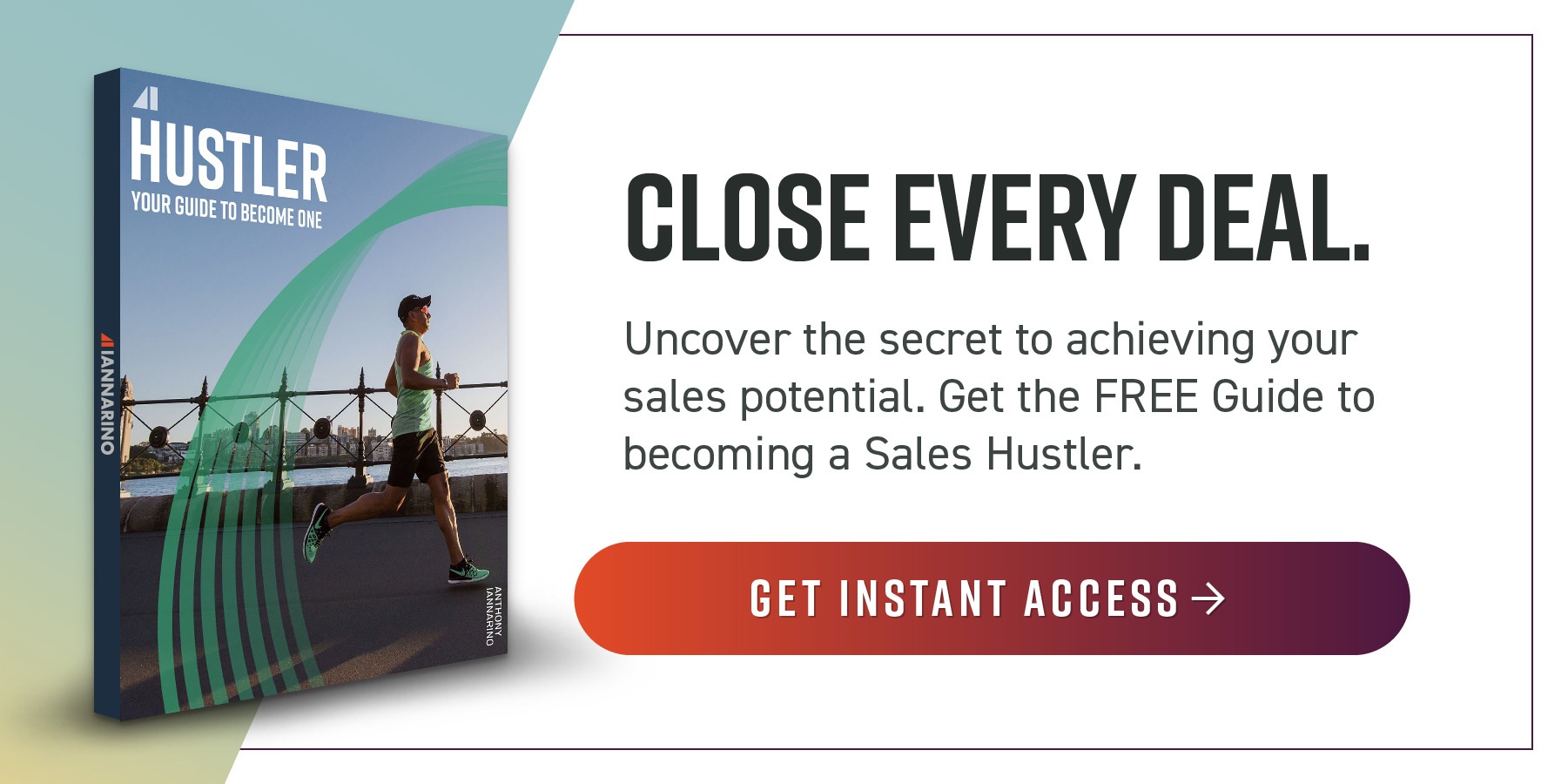A small hole can sink a big ship. Even the smallest crack can let in water; before you know it, you’ll be sinking faster and faster. The same is true of an ineffective sales presentation. If your presentation isn't airtight, you'll soon find your prospect poking at loopholes and raising objections. Before you know it, your prospect has abandoned ship (and your sales funnel) and your sale is a wreck on the ocean floor.
Nobody wants to take a ride on a sinking ship. Your reps don’t want to walk into a sales presentation outline without a pitch they know is strong and deserving of success. With the right sales presentation outline and structure, your team will be more confident and able to win more deals.
Let’s make those dreams of success a reality for you. Whether you’re looking to improve your own results or you’re a sales leader looking to level-up your sales team, if you follow my sales presentation outline, you’ll start to hit your growth targets in no time.
Sales Presentation Outline 101: How an Effective Presentation Can Turn Your Results Around
Before we get too deep into my outline for the ultimate sales presentation, let’s answer a foundational question: how important is a sales presentation outline?
An effective sales presentation is a critical part of your sales process. The best sales presentations aren’t just slide decks filled with numbers and feature lists. The best sales presentations tell stories.
If you want to tell a story that helps the prospect see themselves and the results they could achieve with your product or service, you need to plan your sales presentations carefully. Forgetting a step or a detail can make your story fall flat or fail to offer the prospect value properly.
It’s important to remember that your sales presentation shouldn’t be a one-size-fits-all solution. You should custom-tailor each presentation to the prospect in front of you, positioning them as the hero in the story and showing them how, with your help, they can achieve their goals.
We’ll explore the ten elements every sales presentation outline should contain.
- Summarize Previous Conversations
- Re-Confirm Timeline (if Determined)
- Set Expectations
- Retrospective Business Review
- Provide the Solution
- Business Review & Return on Investment
- Recap The Conversation
- Identify Potential Blockers
- Present a Timeline
- Confirm Next Steps
1. Summarize Previous Conversations
By the time you get to the point of a sales presentation, I’m assuming you have had at least one previous conversation with the customer.
Remember, your first conversations are about selling the meeting, not selling the product.
Even if this conversation is fresh in your mind, it’s important to recap what was said as your prospects are juggling multiple priorities and might not be as spun up on the process as you.
Summarizing previous conversations will also demonstrate that your prospects’ time and attention are important to you. Demonstrating your familiarity with your prospects’ pain points will also help indicate how you can value them, helping keep them engaged in the presentation.
This step also allows your prospect to provide more details. These additional details can help you steer your presentation in a direction likely to provide the greatest value and the best result.
2. Re-Confirm Timeline (if Determined)
Have you and your prospect communicated a timeline so far? If so, now is the time to re-confirm this information with all invested parties and stakeholders.
On the flip side, this is a good opportunity to nail down a timeline if no deadline has yet been established. From your end, you need to know when they expect to move forward with their decision, and from their end, they need to understand when they might be able to have a solution in place. It’s mutually beneficial to agree on a timeline early in the process.
RELATED READ: How to Deal With Time Objections
Establishing a timeline can also help set expectations. You can also use this to build trust later in the process, by making a promise and delivering on time.
3. Set Expectations
There is no worse way to approach a meeting or discussion than going in without clearly expressing the agenda or purpose of the meeting beforehand. Confirm points of interest before the call and start the call off by clearly outlining what will and will not be covered in the conversation.
Remember: This call is for the prospect, not for you. You need to ensure that you don’t leave your prospect hanging or surprise them.
Setting the agenda beforehand will help you determine who needs to be on the call. For example, if you’re walking through a demo, you may need different parties on the call from the parties you’ll need to include if you intend to close the deal.
Set your meeting agenda and stick to it, respecting everyone's time.
4. Retrospective Business Review
Your sales presentation should include a retrospective business review. What is a retrospective business review? You need to examine the state of the organization. What challenge is this business facing that makes them a good fit for the solution you offer?
Examine elements like:
- Falling sales
- Missed targets
- Wasted time
- Goals and KPIs
Walk your prospect through the undesirable state, reminding them of why they need your solution. The retrospective business review works because the first step in any marketing or sales funnel is problem awareness, and this is helping you walk your customer through their problems.
5. Provide the Solution
Once you’ve presented the retroactive business review, you’re ready to present your solution. You can present your solution in the form of a demo, a trial, or a training session. Ensure that you present the solution in the format that most clearly shows the benefits.
RELATED READ: How To Improve Sales Performance in 6 Simple Steps
Ensure you’re presenting the following information:
- How does your product work
- Who uses it
- What features will help solve their problem
- What additional factors have they not considered, or can provide them with even more benefits?
6. Business Review & Return on Investment
Now that you’ve presented your solution, you want to do the opposite of a retrospective business review and paint a picture of their results if they were to work with you.
You can present this business review in forms such as:
- Diagrams
- Graphs
- Statistics
- Testimonials
You can think of these pieces of your presentation as a before and after snapshot. The benefit of this part of your presentation is to position your solution as more than just a product but as a means to achieve their goals.
7. Recap The Conversation
By this point in your presentation, you’ve covered a lot of ground. To keep everyone aligned, you need to take some time to recap the conversation.
You can think of this part of the presentation as repackaging the entire conversation and providing it to the prospect in as few words as possible, almost like it’s a pamphlet they can take with them.
Bringing things full circle will help your customer feel like you’re providing a full-scale solution, and help them feel assured that you’ve covered all bases.
8. Identify Potential Blockers
Regardless of how strong your presentation is, your prospect will likely still have some doubts or concerns about your solution. Simply asking your contact about these concerns upfront can be a game-changer.
RELATED READ: Why Inviting Objections Helps You Win Big Deals
Take this opportunity to see where they are in their process. Are they vetting other solutions? Is there a cheaper option they are considering? Asking these questions can inform you of what you need to do to win the deal.
Another way to address blockers is to outline the three areas that cause clients to fail to improve their results and what the client needs to do to ensure success. This process can help position yourself as an advisor and help to let the customer know you’re on their side and want to do what you can to help get them a solution.
9. Present a Timeline
Once you’ve discussed potential blockers, present a timeline if you haven’t already. What do the next steps look like, and how long might each take?
Ensure you determine which stakeholders need to be involved. This is also the part of the meeting where you establish whether additional presentations or meetings will be needed to discuss solutions and options.
Remember: Your timeline isn’t the only one that matters. Inform yourself of your prospect’s timeline as you inform them of yours. That way, all parties know where the sale is in the buying process.
10. Confirm Next Steps
Now that you’ve completed your sales presentation, you have only one job left: Confirm the next steps, even if it’s just a quick follow-up call.
The most common reason account executives get ghosted is because they haven’t created enough value, but the next common reason is that they failed to set another call.
RELATED READ: Four Mistakes You Make When Following Up
This sets the expectation that you will be reaching out again, and puts the ownership on the customer to follow through. Additionally, it helps set expectations for what they need to do before the next conversation.
The Sales Presentation Outline Designed to Close Customers
Creating a sales presentation outline can significantly improve your close rates by creating structure, purpose, and intention behind your sales calls. It can help show your customers you are prepared, and that you care, and it can help you stay on top of organizational details that can help you win the deal.
Your sales presentation outline also serves as a checklist. Ensuring you follow an outline beat-for-beat will help ensure you don’t miss any important details or questions in the moment.
Structuring your presentation around your customers' needs and focusing on storytelling rather than the product can help you create a more engaging, thoughtful, and effective presentation to attract more customers.
If you follow the ten steps in the outline provided by this post, you can craft a presentation certain to guide your prospects through the final stages of your sales process and close more deals.
For more tips on crushing your sales targets, check out my free Sales Hustler eBook. This resource can help you build an indomitable mindset and reach your full sales potential.













